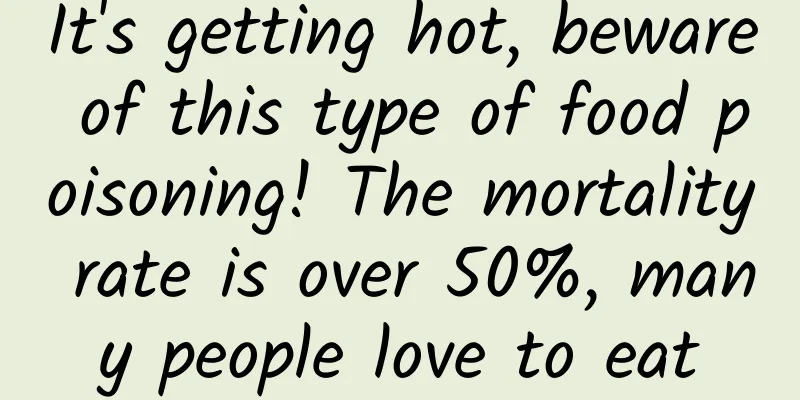Cancer is contagious, but not in the way you think

|
"Viral" and "contagious" cancer has become another rumor about the "collective cancer" incident at Zhongshan Second Hospital. However, when we count all the cancers related to humans with "contagious" properties, we cannot find the three types of cancer in the incident. Written by | Wang Chenguang In the early days of the "collective cancer" incident at the Sun Yat-sen Second Hospital, an amateur science writer named "Dr. Zou from the Respiratory Department" published an article on his WeChat public account titled "Students of Professor Su Shicheng's Team at Sun Yat-sen Memorial Hospital of Sun Yat-sen University collectively suffer from cancer. The terrible truth behind it". In addition to carcinogenic agents and radiation, he gave a bolder speculation: "Mutual influence between students may also have promoted the occurrence of cancer" and "Mutual infection between students may also be one of the reasons for the collective cancer." Based on these two assumptions, it is not difficult for anyone with a professional background in oncology to judge how ignorant this "Dr. Zou of the Respiratory Department" is about tumor genesis. Cancer is indeed "contagious", but it is definitely not in the way Dr. Zou understands it. Directly transmissible cancer Our understanding of the concept of infection comes from infection by pathogenic microorganisms. For example, the new coronavirus is transmitted through droplets, and human papillomavirus (HPV) can be transmitted from one party to another through sexual contact, causing infection. So what does cancer "contagion" mean? There are two ways of transmission that are considered cancer "contagion", one is direct and the other is indirect. The former refers to the spread of cancer cells between host individuals, and the latter refers to the spread of cancer risks through media (oncogenic viruses). Cancer can be spread through the transfer of living cancer cells between individuals, which is the basis for the construction of cancer animal models in the laboratory. Using inbred lines to construct cancer models in experimental animals (mainly mice) through transplantation is an important tool for cancer research and drug development. Tumor experimental animal models include syngeneic tumor models and allogeneic tumor models. The latter is most commonly done by transplanting human tumor cells into mice to form tumors. In order to overcome the host mouse's immune rejection of human cells, immunodeficient mice are usually required. Due to the existence of the immune barrier, the cancer models used for transplantation (whether mouse or human cancer cells) will not cause cancer even if they are accidentally injected into the operator. In nature, cancers that spread directly from one individual to another are extremely rare. Among mammals, only three transmissible cancers are known, affecting dogs and Tasmanian devils. Several transmissible cancers have also been found in marine bivalve mollusks, including various clams, cockles, and mussels. One of the better-known diseases is canine transmissible venereal tumour (CTVT), also known as transmissible venereal tumour (TVT) or Stick's sarcoma, which is a transmissible cancer that affects dogs. CTVT is spread by the transfer of living cancer cells between individual dogs, mainly during mating. CTVT causes genital-related tumours in male and female dogs and is a common disease in dogs around the world, with its distribution related to the number of stray dogs in each area. Just as the mutation spectrum of the new coronavirus can be used to analyze the transmission characteristics, the path and time of CTVT tumor transmission can also be pieced together by analyzing the mutations carried by CTVT tumors around the world. The analysis found that CTVT did not come from the dog's own tissues. All such tumors can be traced back to a dog about 6,000 years ago because all CTVT carry genes belonging to this "founding dog." It can be said that CTVT is the oldest cancer known in nature. Another naturally occurring tumor that can be passed from animal to animal is Tasmanian devil facial tumor disease (DFTD), which occurs in the Tasmanian devil, the world's largest living carnivorous marsupial, found only on the island of Tasmania, south of mainland Australia. The devils are affected by two different transmissible cancers, Devil Facial Tumor 1 (DFT1) and Devil Facial Tumor 2 (DFT2). Both cancers are spread through bites, particularly during competition for resources such as mates and food. Devils infected by bites develop tumors on the face or inside the mouth that grow rapidly and often kill the infected animal in a short period of time. DFT1 has spread widely across Tasmania and has led to a decline in the Tasmanian devil population, which is now considered an endangered species. DFT2 appears to be confined to a peninsula in southeastern Tasmania. The mechanism by which DFT evades destruction by the immune system is not yet fully understood. One explanation is that these Tasmanian devils are confined to a relatively closed area (island), and long-term "inbreeding" has caused their major histocompatibility complex (MHC) to converge, similar to the inbred mice used for research purposes mentioned above. The human MHC gene is very complex, consisting of more than 200 genes. Different combinations of these genes form a unique "chemical fingerprint" in the human body. MHC is an important component of the human immune system. Some MHC genes encode cell surface antigens, which are the basis for the immune system to distinguish "self" from "foreign". Almost everyone has their own unique MHC, with the exception of identical twins, who have identical MHC and can transplant tissues and organs without immune rejection. "Indirect infection" that we should guard against The existence of MHC prevents cancer from being transmitted (infectious) between individuals, but the causes of a considerable number of cancers are contagious, mainly cancers caused by viral infections. The environmental causes of most cancers are unclear, but at least this category is relatively clear, that is, "contagious" viral cancers, which account for about 10%-20% of all cancers. In order of the degree of harm (the number of cancer patients), they are human papillomavirus (HPV), hepatitis B virus (HBV), hepatitis C virus (HCV), Epstein-Barr virus (EBV), Kaposi's sarcoma-associated herpesvirus (KSHV) (also known as human herpesvirus 8), human T-cell lymphotropic virus (HTLV-1) and Merkel cell polyomavirus (MCPyV). There is also a class of non-viral pathogens - Helicobacter pylori - that is the culprit of gastric cancer. Human papillomavirus, of which there are at least 12 strains, can cause cancers in men and women, including anal, cervical, penile, throat, vaginal and vulvar cancers. The hepatitis B virus is spread through infected blood, semen, and other body fluids. Hepatitis B is the leading cause of liver cancer. The hepatitis C virus is spread through infected blood. Hepatitis C is another important viral cause of liver cancer and can also cause non-Hodgkin lymphoma. There is no specific vaccine so far, and drugs are the main treatment. Epstein-Barr virus is a herpes virus that is spread through saliva. Infection with Epstein-Barr virus increases the risk of Burkitt lymphoma, certain types of Hodgkin and non-Hodgkin lymphoma, and stomach cancer. There is currently no vaccine against the virus. Human herpesvirus 8 (HHV-8) has been linked to Kaposi sarcoma in people with weakened immune systems. Human T-cell leukemia virus, also called human T-lymphotropic virus, is associated with adult T-cell leukemia/lymphoma. This virus is spread through semen, vaginal fluids, blood, and breast milk. Merkel cell polyomavirus (MCV) is associated with 80% of Merkel cell carcinomas (MCC). Patients with this cancer are not contagious, so no infectivity restrictions are required. Human immunodeficiency virus (HIV) is spread through infected semen, vaginal fluids, blood, and breast milk. Although it does not directly cause cancer, it can increase the risk of other types of cancer by damaging the immune system, lowering the body's defenses against other cancer viruses. Viral cancer can be avoided and reduced by cutting off the transmission pathway of the virus, thereby reducing the risk of viral cancer. HPV vaccine can help reduce the risk of HPV-related cancer, so it is recommended that children aged 11-12 years old be vaccinated with HPV vaccine as much as possible; hepatitis B vaccine can help reduce the risk of liver cancer, so it is recommended that all children and adults get hepatitis B vaccine. If you are not sure whether you have been vaccinated, you can confirm it through examination. Screening can be used for certain viruses associated with cancer, such as HPV, HIV, hepatitis B and hepatitis C. The impact of the above viruses on the occurrence and development of cancer is very complex. At present, the scientific community does not fully understand how most of the known tumor-related viruses cause cancer. What is known is that viruses change the genes of host cells and turn host cells into cancer cells. Next, let's take HPV as an example to talk about how viruses induce cancer. HPV infection is a confirmed pathogen of cervical cancer and many other cancers. HPV-induced cancer involves many steps, which is consistent with the "mutation-selection" hypothesis of cancer genesis. HPV16 and HPV18 are two major high-risk types of cancer. After infecting host cells, they cause changes (mutations) in the cell genome, especially genes that affect the cell cycle and survival, and gain the ability to escape host immune surveillance, causing cells to proliferate uncontrollably and eventually develop cancer. HPV DNA integrates into the host cell genome and may affect multiple key genes, such as p53 and pRB, which usually play an important role in cell proliferation and DNA damage repair. HPV infection may cause these genes to mutate or become inactivated, destroying the cell's normal inhibitory mechanism against abnormal growth, thereby promoting the occurrence and development of cancer. The “latent period” of viral cancer In the "collective cancer" incident, some people questioned the laboratory's use of viral infection to transform cells, believing that the virus could not be ruled out as a cause. This speculation is also scientifically untenable, because virus-induced cancer is also a long process. Taking HPV-related cancers as an example, the median age of diagnosis for cervical cancer (almost all caused by HPV infection) is 50 years old, the median age of diagnosis for HPV-related vaginal cancer is 68 years old, vulvar cancer is 67 years old, penile cancer is 69 years old, anal cancer is 63 years old for women and 61 years old for men, and oropharyngeal cancer is 63 years old for women and 61 years old for men. HPV infection mainly occurs around the age of 20 (which is why it is recommended that women under the age of 26 receive the HPV vaccine, because by this age, most women have already been infected with one or more HPV viruses). Based on the median age of diagnosis, the "latent period" of HPV-induced cancer is as long as 20-40 years. Some people also questioned the viruses used in the laboratory to build cell models. The most commonly used one is the "lentivirus" among retroviruses. This is a type of modified human immunodeficiency virus (HIV). The harmful genes in HIV are removed and replaced by the genes to build cells. This system can be used to integrate foreign genes into the genome of tumor cells to obtain tumor models. The risk of this type of virus infecting people is extremely small. Even if this risk is not ruled out, cancers related to HIV infection mainly include Kaposi's sarcoma, non-Hodgkin's lymphoma and Hodgkin's lymphoma, cervical cancer, and anal, liver, oral, throat and lung cancer, etc., and do not include the three types of cancer in the "collective cancer" incident. From the above analysis, it can be seen that the three different types of cancer involved in the "collective cancer" incident cannot be transmitted between individuals as judged by "Dr. Zou of the Respiratory Department"; because of the different MHC of individuals (except identical twins), even if a patient's cancer cells are directly injected into other healthy people, it will not cause cancer; these three types of cancer are also not related to known "contagious" viruses. Anyone has the right to question public events, but there is a threshold for questioning scientific issues, and reasonable speculation is required based on scientific knowledge. So far, all rumors attributing the "collective cancer" to the laboratory environment have not stood up to scrutiny. The author of this article is a PhD in biology. He has served as a researcher at the Sidney Kimmel Cancer Center of Thomas Jefferson University, an associate professor in the Department of Cancer Biology, a researcher at the Institute of Radiation Medicine, Chinese Academy of Medical Sciences/director of the Radiation Damage Protection and Drug Research Laboratory, and a professor/doctoral supervisor at Peking Union Medical College. He is currently engaged in the research and development of anti-tumor drugs. This article is supported by the Science Popularization China Starry Sky Project Produced by: China Association for Science and Technology Department of Science Popularization Producer: China Science and Technology Press Co., Ltd., Beijing Zhongke Xinghe Culture Media Co., Ltd. Special Tips 1. Go to the "Featured Column" at the bottom of the menu of the "Fanpu" WeChat public account to read a series of popular science articles on different topics. 2. Fanpu provides a function to search articles by month. Follow the official account and reply with the four-digit year + month, such as "1903", to get the article index for March 2019, and so on. Copyright statement: Personal forwarding is welcome. Any form of media or organization is not allowed to reprint or excerpt without authorization. For reprint authorization, please contact the backstage of the "Fanpu" WeChat public account. |
<<: My face turns red and my heart beats fast when I see someone I like. What's wrong with me?
Recommend
How to build an Internet finance product community?
Forums, as one of the first gathering places for ...
How to attract fans for a public account? How does a new public account attract fans?
Fan economy is quite popular nowadays. If you wan...
5 steps to teach you how to minimize user acquisition costs!
Many startups are interested in trying to discove...
Full set of VIP paid SEO training for the entire network with black hat SEO tutorial
Full set of VIP paid SEO training for the entire ...
Why don’t the “cherry-flavored” snacks you eat look like cherries?
In daily life, if we only talk about fruit drinks...
How can a small brand turn into a big brand?
In the past, if a small brand wanted to turn arou...
What is the magic of G219, China's most beautiful self-driving highway?
The Tibet section of National Highway 219 is a un...
How to place advertisements for novice APP operators
What is operation ? This kind of question appears...
Build a super detailed AARRR model data indicator system in 5 minutes
The AARRR model is our classic model for user ana...
This fatal sore throat was cured thanks to his “fighting poison with poison” a hundred years ago!
Sore throat is the first symptom of about one-thi...
How much does it cost to be an agent for a fresh food mini app in Daqing?
How much does it cost to be an agent of Daqing’s ...
Who are those people who are still using dial-up internet?
The United States is considered one of the most d...
The end of the taste is the poetry, wine, mountains, rivers and seas.
Written by Wei Shuihua No.1 Food and wine pairing...
Winter Olympics Technology Illustrated | Flower skates, ball skates, speed skates... The "ice skates" used in the Winter Olympics are very different
|||| Written by reporter Zhao Tianyu Edited by Ch...









